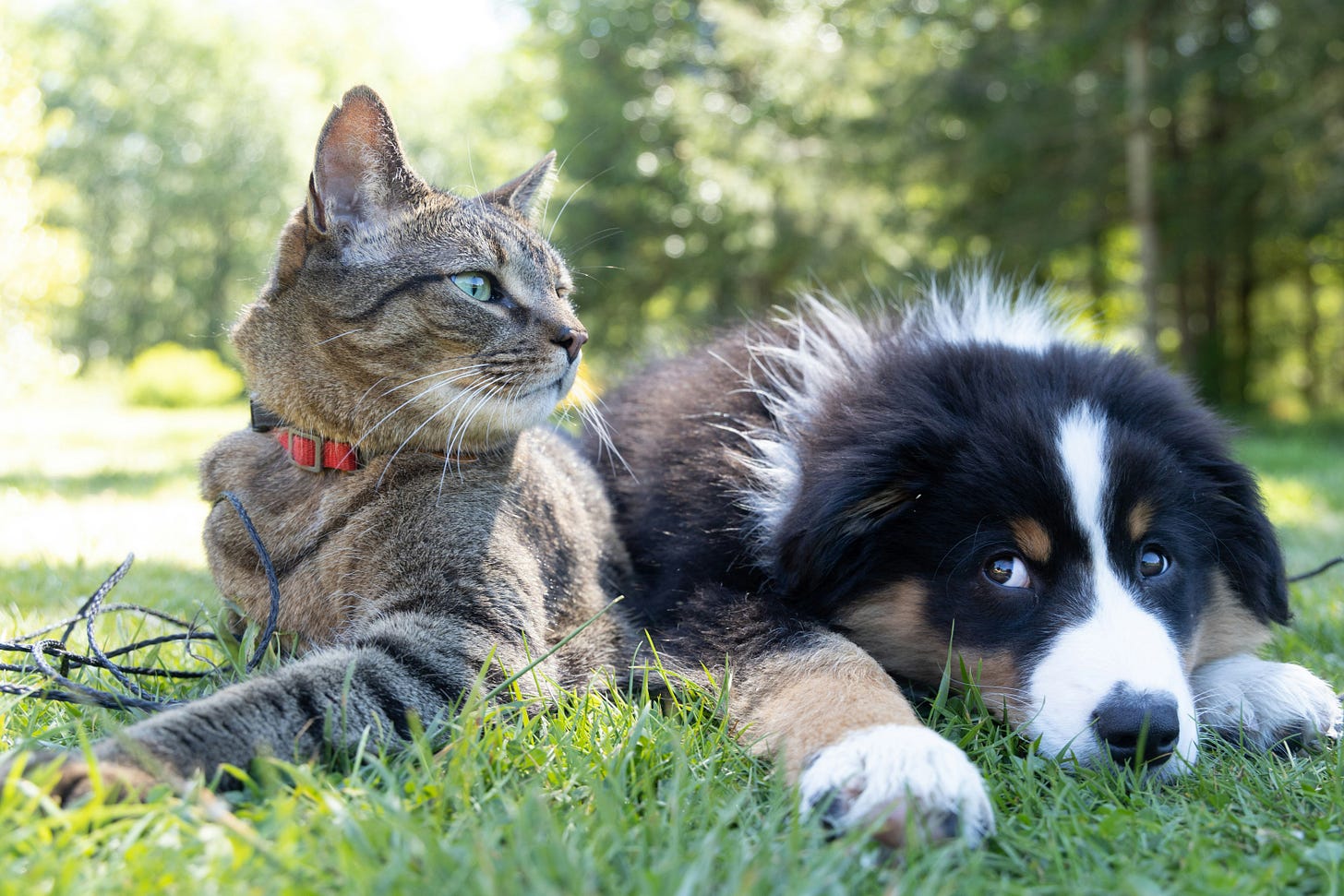An Easy Way to Protect Your Pets
If you have a companion animal, you need pet insurance. The monthly premium and deductibles are worth every penny if your pet becomes ill or injured.
My dog, JuJu, was 12 years old when he was attacked by a neighbor’s dog and mauled. For over 10 minutes, the neighbor’s dog clamped down on JuJu’s hindquarters and refused to let go. Other neighbors ran to help us, bringing food dogs love to tempt the attacker to let go of JuJu. Nothing worked until one neighbor choked the attacker, while another slipped his hands in the dog’s mouth and freed JuJu. Everyone ended up with bite wounds. JuJu’s right hip was eviscerated.
Thank God JuJu survived and made a full recovery. To repair the wounds, he underwent four surgeries in 17 days. He took toxic-level antibiotics that required me to wear latex gloves to handle. I carried him in and out of our apartment building for his daily constitutionals for seven weeks. My sweet baby boy, who wouldn’t harm an ant, went through hell. His medical bills totaled over $8,000.
I learned the hard way why every companion animal caregiver needs pet insurance.
Fifteen years earlier, I had pet insurance from a major life insurance company. It didn’t cover anything my two dogs needed. Eventually, I gave up on paying the premiums and didn’t even consider pet insurance when I adopted JuJu. I thought it was useless. But with the growing importance Americans place on their companion animals, pet insurance has evolved. Today, it’s foolish not to insure your fur baby. Pet insurance is one of the most cost-effective ways to provide your beloved family animals with the best care possible.
Following JuJu’s attack, I closed the proverbial barn door. I went with Pumpkin Pet Insurance because (a) a friend recommended it, and (b) it was the only insurer willing to initiate a new policy for a 12-year-old dog. Two years after JuJu’s attack, I had never even filed an insurance claim, harkening back to my previous experience with pet insurance. Then, JuJu developed intervertebral disk disease. The best treatment for a dog his age is acupuncture and cold laser therapy. Initially, JuJu had weekly treatments that also included physical therapy. At $160 per treatment with an initial evaluation of an additional $100, the vet bill for one month totalled $780. After the first month, he’s had follow-up treatments every three weeks for the past two years. Pumpkin covers 90 percent of all costs after meeting the $500 deductible. It also reimburses prescription meds and emergency care.
A friend’s dog, Julietta, has had multiple medical issues that would have created an enormous financial burden if Julietta were not insured. Julietta has had ACL surgery on both hind legs and is now undergoing treatment for cancer. The surgeries and ongoing medications have already totaled approximately $20,000. Julietta’s insurance policy, which is through Trupanion, also reimburses 90 percent of the expenses.
Trupanion sets no dollar limits on claims; JuJu’s policy with Pumpkin has an annual coverage limit of $10,000.
Another insurer I’ve heard good things about is Fetch. A friend's dachshund, Theo, is insured by Fetch. Her policy reimburses 80 percent of treatment for Theo’s orthopedic issues. Multiple major auto and property insurers, including Progressive, Liberty Mutual, State Farm, and Nationwide, offer pet insurance that you may be able to bundle with your other insurance plans. Check with your insurer to see what’s available.
Every state has its own insurance commission with laws specific to that state. Therefore, not every insurer will offer the same coverage in every state.
Factors to consider in choosing a pet insurance provider include:
What’s available in your state? You’re not looking for the best overall pet insurer. You’re looking for the best coverage where you live.
Will the insurer cover your companion animal regardless of age? Will your pet age out of coverage? Pumpkin is one of the few companies that guarantees it will continue insuring your companion animal for life.
Dog and cat breeds. The most expensive dog breeds to insure include the Mastiffs, Saint Bernards, English and French bulldogs, Great Danes, and Rottweilers. For cats, insurance is more costly for Siberian forest cats, Bengals, ragdolls, Maine coons, Russian blues, Siamese cats, Sphynxes, Persians, and Himalayans.
Exotic pets are more difficult to obtain insurance for.
Common exclusions
Most pet insurers do not cover preventative medicine, including annual checkups, vaccines, dental cleanings, flea/tick treatment, and nutritional supplements. Pet insurance policies rarely cover euthanasia. All insurers will exclude pre-existing conditions. Therefore, it’s important to insure your pets as soon as you adopt them before any problems arise.
Peace of mind
JuJu is now 16 years old or, possibly, older. He has numerous lumps — some are skin tags, some are fatty tumors — throughout his body. Though his insurance would cover their removal, I have not elected to do that yet. Anesthesia is rough on animals. Because of his age, I focus on keeping him active and pain-free. He uses CBD oil. He takes supplements. He walks approximately one hour daily. I give him Galliprant when necessary.
JuJu’s health insurance premiums have been decreasing for the last two years. Currently, I pay $126.03 monthly. It feels like a small price for peace of mind.
Below, is a video I took of JuJu on March 30, 2025. Sixteen years old.




